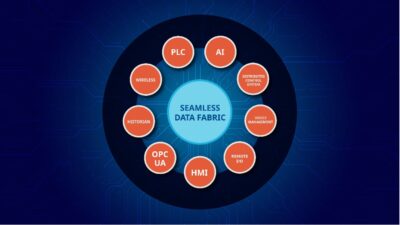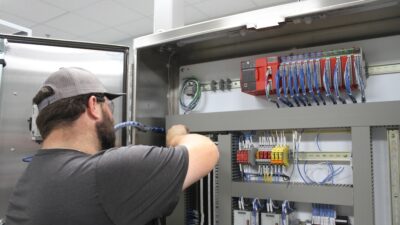In an April 19 webcast, Alec Grainger, senior product manager, GE Digital, explored considerations to be made to ensure scalability when installing and working with HMI/SCADA systems. Learn more and see a link to the archived webcast below.

Learning Objectives
- Learn about the evolution of modern SCADA
- Explore the benefits of enterprise-wide, scalable HMI/SCADA systems
- Understand how a modern HMI/SCADA system can optimize facility operation.
HMI/SCADA Insights
- Many organizations have multiple, disconnected SCADA systems, which increases costs and decreases the ability to optimize operations.
- To ensure scalability, an HMI/SCADA system must be able to add more clients over time, and must have the capacity for mobile access. Because an enterprise may not be focused in a single geographical area, remote connectivity is essential.
- Enterprise HMI/SCADA systems grant end-users several beneficial capabilities including centralized management, remote monitoring and operations, and large-scale visibility.
Learn about the evolution of modern supervisory control and data acquisition (SCADA) and human-machine interface (HMI) systems with advice on how to scale them across the enterprise in an April 19 webcast, “Can your HMI/SCADA system scale and serve as an enterprise-wide solution?” Results include 40% faster troubleshooting in less than a year, and a 70% increase in user-experience usability score. More information about and from the webcast follows.
Webcast attendees qualify for a certificate of completion. Though the webcast is archived for a year, those who attended live were able to ask experts questions about HMI/SCADA systems and the advantages of scaling them across the entire enterprise when possible.
Why scale an HMI, SCADA system?
HMI/SCADA systems have been around for almost 40 years and are in widespread use today. However, users should rethink their existing architecture and deployment options with modern technologies in mind, according to Alec Grainger, senior product manager, GE Digital, and webcast instructor. Many organizations have multiple, disconnected SCADA systems, which increases costs and decreases the ability to optimize operations. Maintaining one, enterprise-wide SCADA system across multiple facilities helps increase efficiency and is more cost-effective. There are many reasons why some companies may not have adapted. For instance, the use legacy systems that have never been standardized into one SCADA system across multiple plants. Some companies even may have multiple systems acting as point solutions in a facility. Still, because the technology is mature, not all SCADAs can deliver the required interoperability or scale to a cost-effective and easily implemented enterprise-wide solution.
When is an HMI and SCADA system scalable?
According to Grainger, there are several selection criteria end-users should keep in mind to ensure an HMI/SCADA system is scalable:
-
The system must be able to add more clients over time and must have the capacity for mobile access. Because an enterprise may not be focused in one geographical area, remote connectivity is essential.
-
As expansion occurs, more redundancy must be added to the system. As applications become larger and more complex, the potential for outages becomes more threatening, and redundancies must be added to the system to mitigate outage risk.
-
End-users must be able to seamlessly integrate new components. Varying protocols used in different parts of the organization must be consolidated to enable interoperability and a consistent user experience.
Outcomes and ROI related to HMI, SCADA
Enterprise HMI and SCADA systems grant end-users several beneficial capabilities including centralized management, remote monitoring and operations, and large-scale visibility. In his presentation, Grainger highlighted several realized outcomes from GE customers in different sectors who have scaled HMI/SCADA systems across an enterprise:
-
Chemicals: 37% increase in abnormal situation handling effectiveness in less than one year.
-
Water utility: 40% faster troubleshooting in less than one year.
-
Power: 70% increase of user-experience usability score.
-
Building management: 25% reduction of energy bill within 18 months.
CONSIDER THIS
Are you implementing HMI/SCADA systems in a way that will allow for future scalability?


